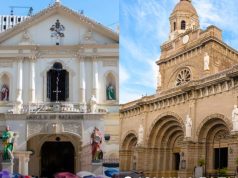
Does Metro Manila need a so-called traffic czar?
Filipinos on social media gave suggestions on how to resolve Metro Manila traffic after advice from the Management Association of the Philippines (MAP) gained traction online.
The business group on January 29 said that the government must appoint a traffic czar to manage the perennial problem of the National Capital Region after a transportation data specialist tagged it as the worst place in the world to experience metro traffic.
The MAP, according to ABS-CBN News, said that the government should recognize that the traffic crisis is a failure in traffic management.
It added that the president should appoint a traffic czar who it said should be given powers to mobilize, direct and deploy government resources to ease traffic.
MAP said that Metro Manila should be organized into four traffic management zones, with each zone having its own traffic manager.
They will then report to the traffic czar.
The traffic czar suggestion was met with a lukewarm response from some users on the X (formerly Twitter) platform who believed that the traffic crisis should be managed differently.
Some said hybrid or work-from-home options should be set in companies if the work can fully be accomplished remotely.
“IATF for traffic? Just stop requiring people to go to offices already as a start. Stop unnecessary travel,” technologist Dominic Ligot wrote.
“STOP UNNECESSARY TRAVEL! Bakit ba kasi pilit pinabalik ang lahat sa opisina kung pwede namang hybrid. Kawawa ang mga tao dahil sa bulok na mass transport system,” actor Phi Palmos wrote.
Others thought government agencies needed more coordination in terms of communicating with each other to implement policies.
“What they also need is a group chat,” transport journalist Jacque Manabat said.
“Not a czar, but a lead and better coordination — in short, what the Government needs is a Viber group,” Ira Cruz of AltMobility PH said.
Other online users aired different suggestions.
“What Metro Manila needs is genuine agrarian reform in the provinces. Metro Manila — with its traffic and all its hellish problems — is unsolvable unless we stop this urban in-migration, let the countryside develop, and reduce people in NCR to make it manageable and sustainable,” Student Christian Movement of the Philippines chair Kej Andrés wrote.
“What Metro Manila needs is not a traffic zar, but a transportation body that understands that we should create ‘Cities Built For People, Not Cars,'” a climate justice advocate said.
“If only the government prioritized public transportation and not a car-centric economy, then perhaps we would not have the need for a ‘traffic czar,'” commented a different Pinoy.
Last month, TomTom noted in its 2023 Traffic Index that Metro Manila was the worst place in the world to experience metro traffic.
The TomTom Traffic Index assesses the traffic conditions in metropolitan areas across the globe, analyzing factors like road infrastructure, speed limits and vehicle flow.
The traffic index said that Metro Manila drivers spent an average of 25 minutes and 30 seconds just to travel 10 kilometers in 2023. This is the slowest, compared to 387 areas mentioned in the study.
The data translates to 117 hours lost in traffic last year for those in the NCR, a time equivalent to almost five days.
TomTom said that the worst day and time to travel in Metro Manila is Friday, from 5 p.m. to 6 p.m. It added that a 10-kilometer drive took an average of 35 minutes and 30 seconds.
From ranking second in 2022, Metro Manila took the top spot among metro areas in the 2023 index, overtaking Bogota in Colombia, which dropped to fifth (23 minutes and 30 seconds).
For comparison, some of the largest metro areas in Southeast Asia — Singapore, Jakarta in Indonesia, Bangkok in Thailand and Kuala Lumpur in Malaysia — clocked less than 20 minutes.
Metropolitan Manila Development Authority acting chair Don Artes previously said that record-high sales of private vehicles are among the reasons for vehicular congestion on the roads.
He also said that Metro Manila’s roads are already structurally over capacity, adding that over 400,000 vehicles ply EDSA every day, even if it only has a carrying capacity of 300,000 a day.
Other suggestions that the MAP had include reviving and creating new “Mabuhay Lanes” or alternate routes to relieve traffic congestion in major thoroughfares like EDSA and C5 and strictly enforcing laws in these lanes like banning parking on peak hours and impounding erring vehicles.
The business group also said left turns and crossings should be limited in the metro. It added that U-turns should likewise be disallowed, except in suitable locations.
Moreover, the government should adopt the national transport plan formulated by the National Economic and Development Authority in 2017, which prioritizes mass public transport over private vehicles.
MAP said the plan allocates more road space for busways and calls for the creation and expansion of sidewalks and bike lanes.









